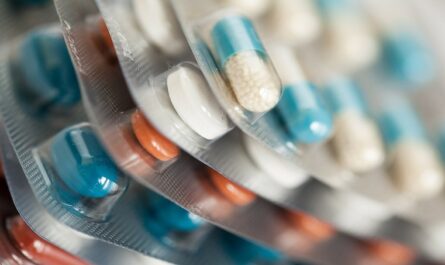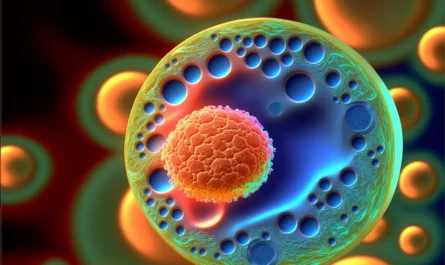
Any modern laboratory requires an array of specialized equipment for scientists and researchers to conduct experiments and analyze samples accurately. Whether for educational institutions, private research firms, or large corporations, the right laboratory Equipment are necessary to advance scientific knowledge and make new medical and technological discoveries. Some of the most common and essential pieces of lab equipment include:
Microscopes
Microscopes provide magnification of tiny structures and organisms, allowing researchers to examine cells, microorganisms, tissue samples, and more at both macro and microscopic levels. Different types of microscopes like compound light microscopes, fluorescence microscopes, electron microscopes, and confocal laser scanning microscopes are used for various applications. High-quality optical components and digital cameras attached to microscopy equipment enable near real-time imaging and analysis.
Centrifuges
Centrifuges use centrifugal force to separate mixtures that are suspended in liquid solutions based on density, size and shape. Clinical chemistry analyzers, blood banks, and microbiology labs extensively use centrifuges. Various models are designed for bench-top use or large-scale industrial applications. Refrigerated centrifuges provide temperature control during separation procedures.
Spectrophotometers
Spectrophotometers measure the absorbance, transmittance, or reflectance of solutions, facilitating colorimetry and photometry analysis. They find extensive use in pharmaceutical, biotech, and medical testing. Single-beam, double-beam, and fiber optic spectrophotometers follow different optical designs for specific applications. UV-Vis spectrophotometers are commonly used to quantify the concentration of biological molecules like nucleic acids and proteins.
Pipettes and Dispensers
Precise pipetting and liquid dispensing are essential for sample preparation and analysis in all laboratories. Manual and electronic pipettes across different volume ranges along with reagent dispensers assure repeatable accuracy. Pipette calibration is also necessary to deliver certified volumes. Tip washing stations prevent cross-contamination between samples.
Balances and Scales
Analytical balances, precision scales, moisture analyzers, and dissolution testing equipment provide quantitative measurements. Features like internal calibration, repeatability, resolution, and leveling ensure reliable weighing of solids, liquids, and other laboratory samples. Moisture analyzers determine water content while dissolution testers study solute release profiles.
Laboratory Equipment for Life Sciences Research
From basic experiments involving bacteria and cells to advanced molecular biology techniques, modern life sciences research depends on high-tech equipment. Some essential lab appliances for fields like biology, biochemistry, genetics, and disease pathology research include:
Incubators
Incubators maintain optimal temperature, humidity, air pressure and gas composition for cell and microbial culture growth. CO2 incubators precisely regulate levels for mammalian cell lines. Plant tissue culture chambers accommodate varied light and climate needs. Benchtop and large walk-in incubators aid long-term experiments.
Biosafety Cabinets
ventilated enclosures provide a sterile work environment and protect users during dangerous procedures involving toxins, genetically modified organisms or infectious pathogens. Various classes isolate samples or filter exhausts to specified contamination levels.
Water Purification Systems
Ultrapure water free from organic, inorganic and microbial contaminants is critical for many experiments and equipment. Systems like reverse osmosis, deionization, and UV filtration at terminal points deliver high-quality water on demand. Resistivity measurement assures quality control.
PCR and Thermal Cyclers
Polymerase chain reaction (PCR) amplifies specific DNA regions for identification, diagnosis and research. Thermal cyclers run multiple temperature cycles necessary for PCR with precise heating and cooling blocks. Real-time PCR machines quantify amplicons in parallel reactions. Digital PCR partitions samples for absolute quantification.
Liquid Handling Workstations
Automated liquid handlers boost efficiency by performing repetitive pipetting, plate reformatting, reagent addition and other microplate tasks quickly with accuracy. Some integrate additional features like plate centrifugation, incubation, sealing and detection. This facilitates high-throughput assays and screening applications.
Lab Equipment for Analytical Science and Testing
From chemical and materials analysis to quality assurance and safety testing, diverse instruments enable analytical labs to precisely characterize samples:
Gas Chromatographs
GC systems separate and measure individual components in a complex mixture like gases or volatile organics. Detectors identify eluting peaks via properties like thermal conductivity, flame ionization or mass spectrometry. Applications encompass environmental monitoring, forensic toxicology and metabolite profiling.
Mass Spectrometers
Mass specs analyze compounds through ionization and detection of their mass-to-charge ratios. Coupled with separation techniques like HPLC or GC, they deliver accurate structural information. Diverse applications cover protein identification, explosives detection and drug screening. High resolution and tandem MS expedite novel biomarker discovery.
Titration Equipment
Titrimetry determines concentrations of various analytes through endpoint detection of redox, precipitation or acid-base reactions. Fully automated titrators handle multistep procedures for enhanced throughput. Kits optimize instrumentation for common assays in quality control testing.
Particle Characterization Tools
Particles spanning colloids to nanomaterials require specialized analysis. Laser diffraction, dynamic light scattering and ultrasonic spectroscopy measure size distribution. Zeta potential and isoelectric point indicate stability. Environmental and inhalation toxicology studies widely employ these techniques.
With growing technological advancement and rising specialization across scientific disciplines, modern laboratory infrastructure undoubtedly rely on a multitude of efficient, precise and high-performance equipment. Proper selection, installation and ongoing maintenance ensure research and analytical goals are effectively achieved in diverse scientific domains.
*Note:
1. Source: Coherent Market Insights, Public sources, Desk research
2. We have leveraged AI tools to mine information and compile it


